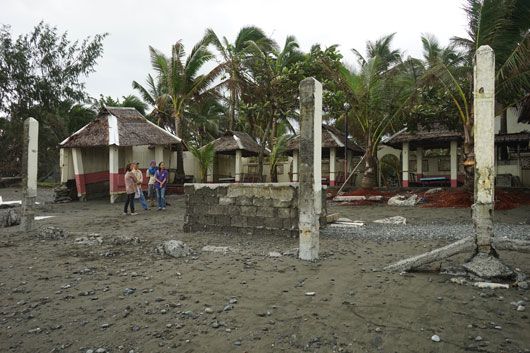Following the devastating typhoon in the Philippines in November, ET staff member, Gregg Butensky, initiated a fundraising effort to bring assistance to the people of Aklan on the island of Panay. Gregg has strong connections in Aklan having established a public lending library there over 15 years ago.
Earlier this month Gregg travelled to the region to ensure that the $10,000 raised is used in the most effective way possible. He’s providing the following dispatches for his donors, republished here for ET readers.

Over the next several days I would juggle attending the Ati-Atihan festival and meeting with Rowena and others to hash out a plan. I’m blessed to be working with people who have a good grasp of Word and Excel and they did an excellent job of capturing details in a series of documents that I could then review. This was done old-school – printed documents – as I had yet to find an efficient way to get online given the limitations of cybercafes combined with my hectic and disjointed schedule.
Our first in-depth meeting was held outdoors at a “resort” (think 3-star hotel at beach, rather than Club-Med) in the barangay of Navitas in Numancia. I arrived a bit early along with my regular tricycle driver, Bobbie (who also lived at the house that had been leveled by the typhoon).
The resort owner greeted me and quickly offered to give me a tour of the typhoon damage they’d suffered. Most significant was the portion on the outer side of the compound’s back wall – the portion right on the beach. It wasn’t until the owner fully described the before that I was able to appreciate the after. What had been a series of divided concrete seating areas was almost completely gone. Only a few cement columns remained, and these served as markers indicating that the beach itself had been eroded by several feet by the storm’s impact.
The resort next door was in worse shape and had shut down completely.
Rowena arrived along with Nida – the Numancia town coordinator for TFT. The three of us went over the latest plan that Rowena had documented. The document was truly impressive. Everything had been researched and there was a plan to make at least some of the assistance sustainable.
The idea was to fund a mix of initiatives that would address different sectors. It’s painfully obvious to TFT – and to me now as well – that 2-1/2 months after the typhoon hit, the relief phase is ongoing. We had all hoped that by the time I had arrived they’d be well into rehabilitation.
The project mix will include three areas – fishing boats (used on the sea), fishing nets (used on the rivers), and housing. The fishing boats are by far the biggest ticket item. They also have an obvious (and relatively high) return on investment. As such, they offer the best opportunity for sustainability of our funds.
Rowena’s proposal included a provision by which the recipients of the new boats would pay a percentage of every night’s take back into the fund. Eventually there’d be enough to build another round of boats. And so on. Given that so many more boats are needed than funds available, it’s important that we use such an approach.
My concern with this particular model was that it would take a lot of management and oversight. I suggested that we instead consider handling it as an interest-free loan, paid back in full within a particular term. This would be simpler to manage and give more clarity as to when the next cycle of boats could be built.
Rowena promised to run the numbers and we would meet again after the fiesta ended.
Read Ethical Traveler's Reprint Policy.
